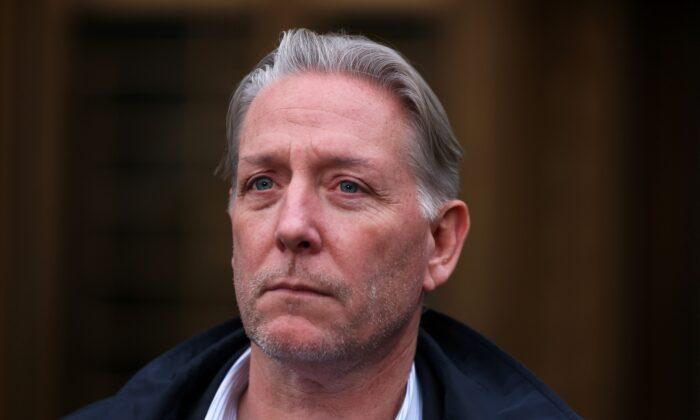“Critical race theory isn’t so much a thing as a way of looking at a thing,” Kimberlé Crenshaw assured MSNBC host Joy Reid last month. Crenshaw is a law professor at UCLA who, as a law student at Harvard, was one of the founders of critical race theory in the 1980s. The cable news segment—headlined “The GOP’s Fact-Free Freakout Over Critical Race Theory”—portrayed CRT as unobjectionable: “It’s a way of looking at race,” Crenshaw said, smiling. “It’s a way of looking at why, after so many decades—centuries, actually—since the emancipation, we have patterns of inequality that are enduring.”
The 1995 book explains that CRT grew out of Critical Legal Studies, the “organizing hub for a huge burst of left legal scholarly production” in the late ’70s. At first the critical race theory advocates were part of the “crits,” as the CLS crowd was known. The “race-crits” (as the CRT advocates of color labeled themselves) participated in Critical Legal Studies conferences, where they traded countercultural strategies. Both groups shared the view that law schools were “an influential site for indoctrination.” The race crits in particular saw them as ideal for building and promoting a “theoretical vocabulary for the practice of progressive racial politics in contemporary America,” according to Crenshaw and her fellow editors of the “Critical Race Theory” reader.
What did she mean by “progressive racial politics”? For starters, it meant rejecting the “liberal legalist tradition that viewed law as an apolitical mediator of racial conflict.” They believed that the traditional civil rights vision was “exhausted.”
The race-crits shared with the crits the view that the law is just power politics draped in robes. But the factions split over whether society was constructed on class or on race. The original crits thought of race as an expression of class, not as a distinct category. Such claims were a “fundamental attack on the very possibility of our project,” Crenshaw and her co-authors wrote. The critical race theory project was to make “color-consciousness,” as opposed to “color-blindness,” central to any discussion of race and the law.
The crits would soon learn that the critical race theorists took seriously their call for race-consciousness, and not just with regard to the Supreme Court. The race-crits viewed their erstwhile allies as just another group to be judged by the color of their skin—which, for most radical left-wing intellectuals at prestigious law schools, happened to be white. “At its inception in the late ’70s, Critical Legal Studies was basically a white and largely male academic organization,” according to Crenshaw. She described the crits as “a predominantly white left.”
The race-crits’ insistence on seeing the world in black and white would soon lead the radicals to splinter.
Crenshaw, writing without irony, noted that the race-crits’ assault on CLS as a white institution “drew a surprisingly defensive response.” Was it really so surprising?
The crits sputtered that they were “allies rather than adversaries” and that their collective energies were best saved for the common cause of tearing down traditional institutions.
Crenshaw remarked bitingly that she “revealed” that the “hip, cutting edge irreverence” of CLS was a fragile façade. The race-crits demonstrated that the countercultural bravado of the crits “could easily disintegrate into handwringing hysteria.”
One of the white intellectuals at that workshop was Gary Peller, who puts a positive face on the “intervention.” He tells RCI that “it did highlight that white leftists had not thought in sophisticated ways about race.” But he’s not sure it was worth the “anguish and handwringing.” Peller says, “It’s not effective to confront and blame people.”
In the bitter aftermath, a few, including Peller, kept a foot in each camp. But as might have been expected, the crits and the race-crits had something of a falling out.
Once they were largely freed of the stodgy views of the white radicals, the academics who practiced critical race theory developed an ideology that rejected the old-fashioned liberal goal of integration. They argued that integration meant the loss of African American identity and culture and likened assimilation to genocide. They embraced color-consciousness and black nationalism; they dismissed the old ideal of color-blindness as a sort of false-flag operation, calling it “an ideological strategy by which the current [Supreme] Court obscures its active role in sustaining hierarchies of racial power.”
Kimberlé Crenshaw is notable not only for her role in critical race theory, but also in developing the concept of “intersectionality.” She brought those trendy academic concepts together two years ago in a book titled “Seeing Race Again: Countering Colorblindness Across the Disciplines.” In it, she denounces the effort to see individuals as people with rights regardless of color, saying it just distracts from the “inequalities, and injustices of existing social relations.” In the world of CRT, colorblindness is neither “appealing” nor “morally just.” Instead, it is a conceit, a “tool crafted to protect white preferences and privileges.”
Critical race theory is nothing if not ambitious. It “questions the very foundations of the liberal order,” according to CRT pioneer Richard Delgado. He writes that critical race theorists reject core tenets of classical liberalism including “Enlightenment, rationalism, and neutral principles of constitutional law.”
Randi Weingarten, president of the American Federation of Teachers, recently defended schools and schoolboards against activist parents who she claimed were trying to stop teachers “from teaching students accurate history.” But critical race theory isn’t about teaching history. It is an ideological movement, one that discourages integration, rejects color-blindness, and scoffs at the rule of law.
Critical race theory came into its own by accusing friends and colleagues of racism. If that’s how allies are treated, should it be any surprise that parents and lawmakers opposed to what they see as the radical indoctrination of children should find themselves accused of racism too?






